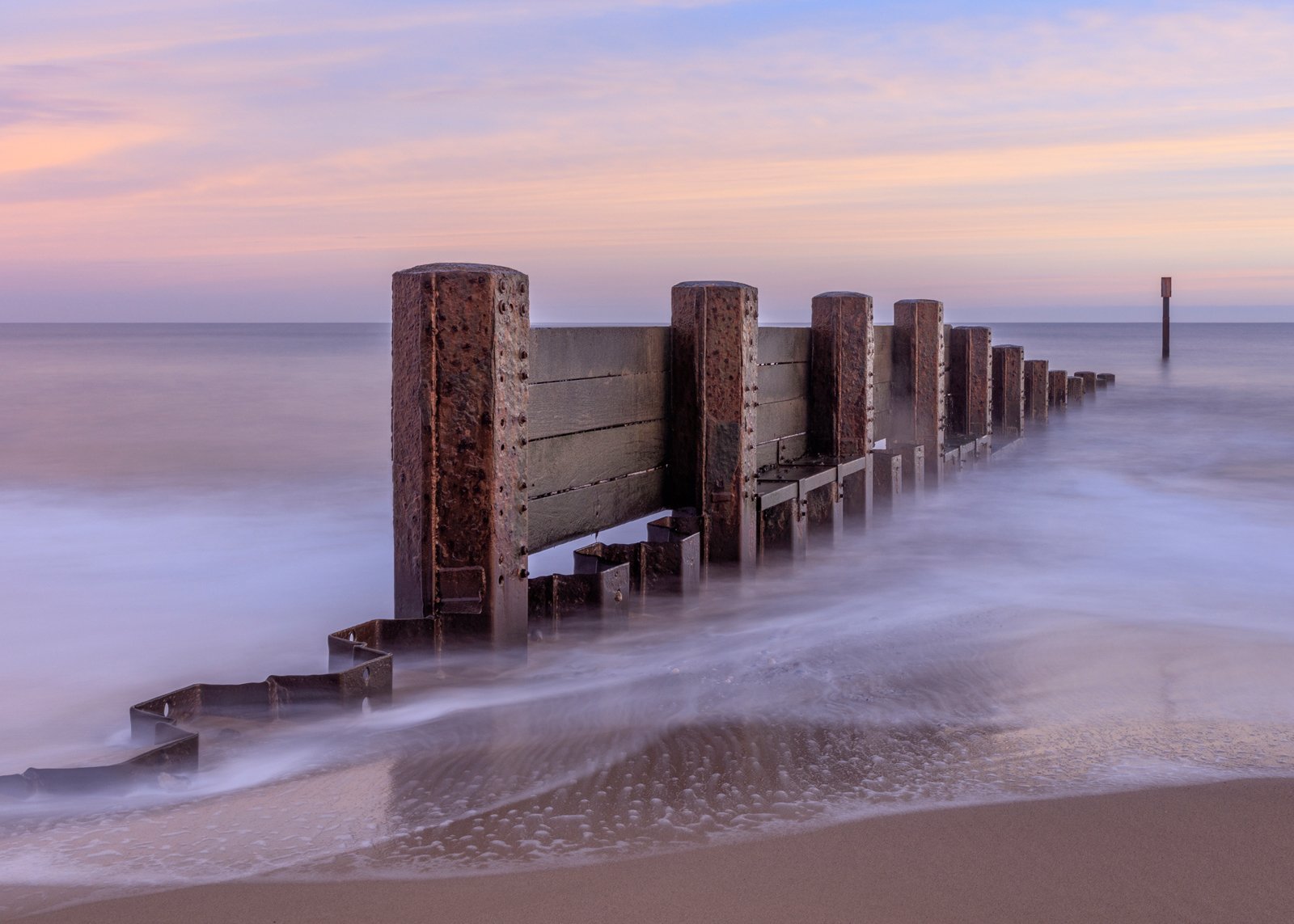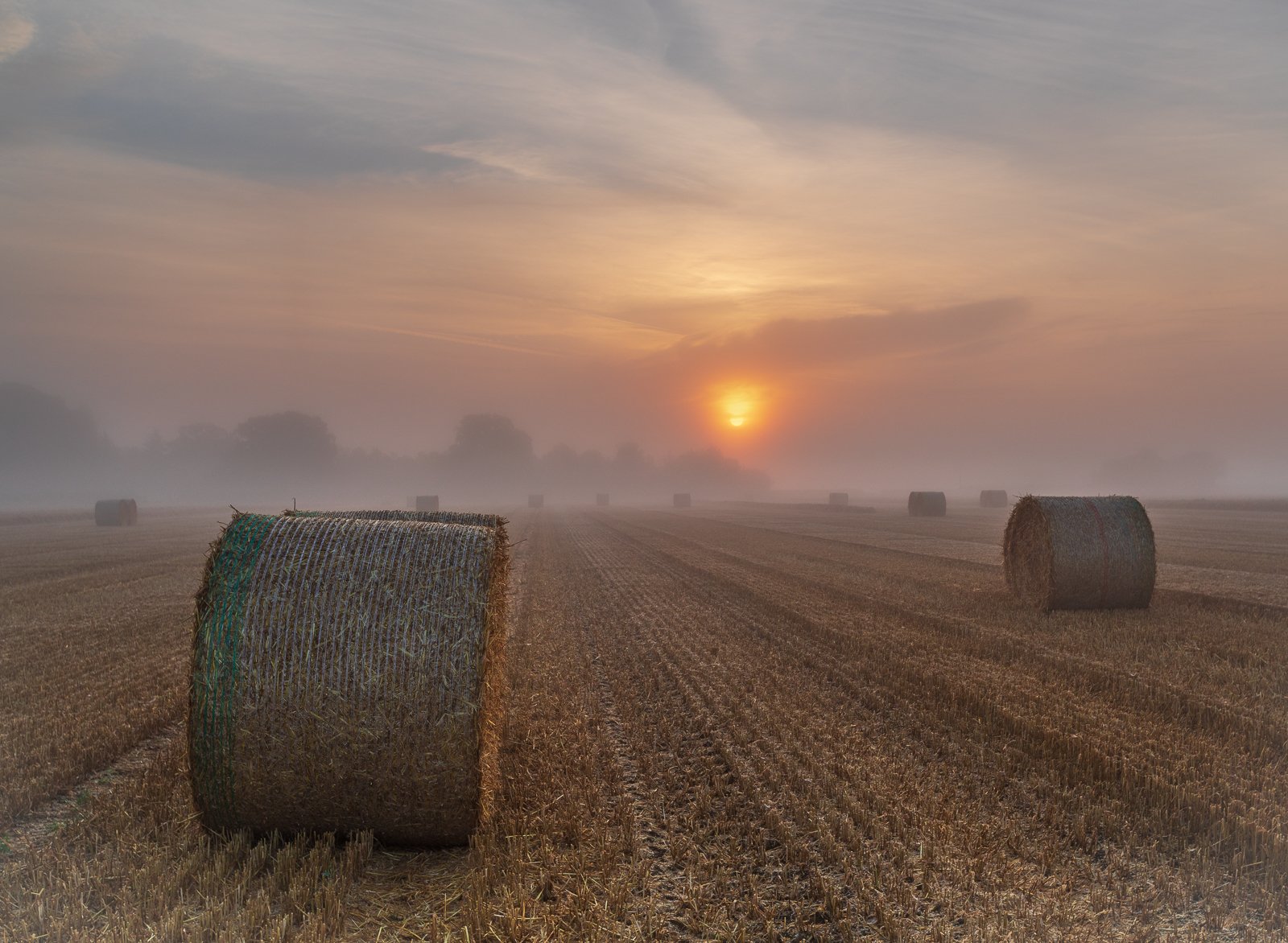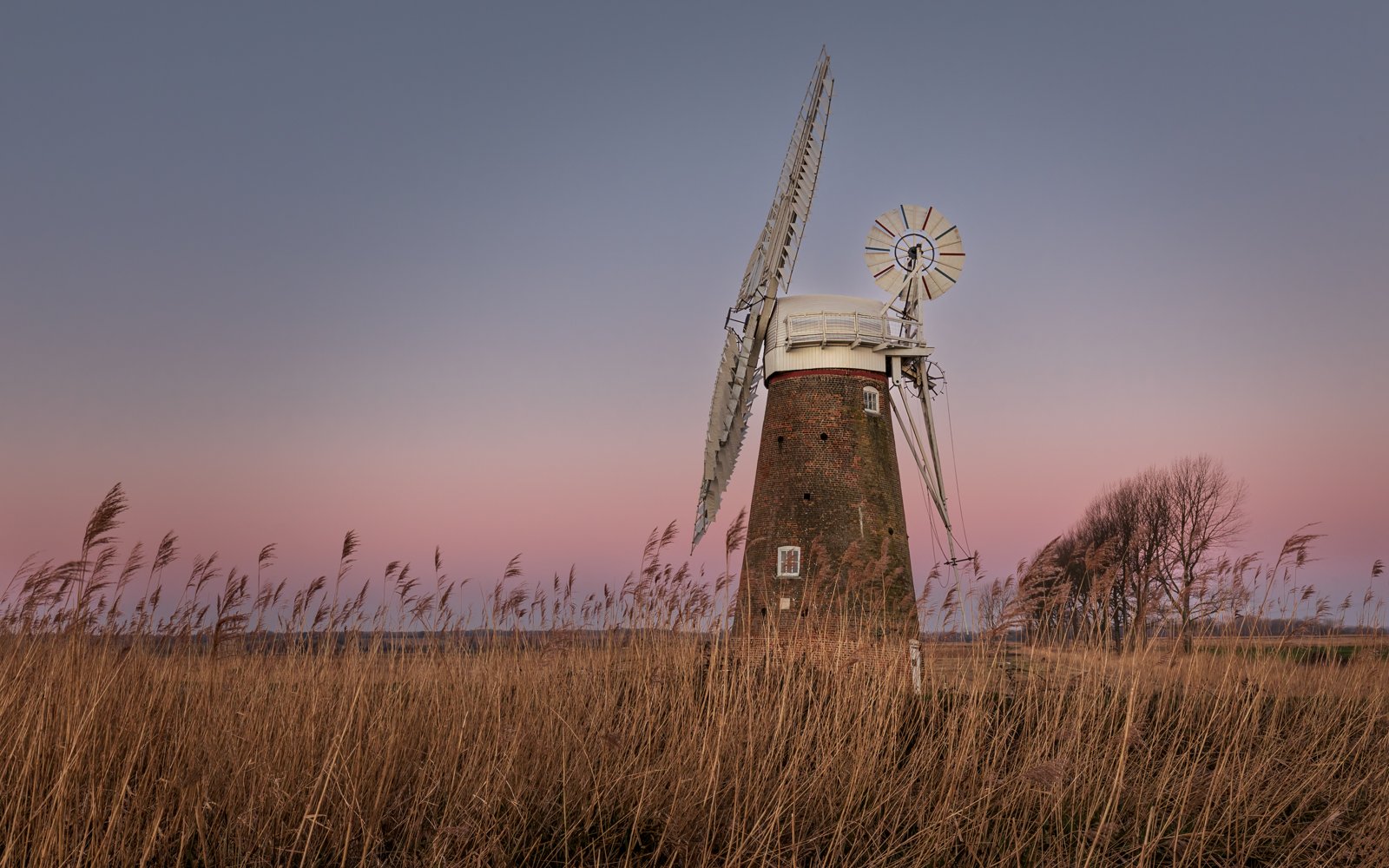Tucked away in the lower east corner of The Wash, Snettisham is the first beach you’ll find when travelling north along the A149 coast road from King’s Lynn. In common with the other beaches along this stretch of coast – Heacham, and Hunstanton – Snettisham Beach faces west, with views across The Wash towards Lincolnshire.
Protected from the North Sea winds by Norfolk itself, the west-facing beaches experience calmer and more agreeable weather than the more exposed beaches on the north and eastern coasts, and with their westerly aspects, provide ideal vantage points for photographers to enjjoy.
As many members will know Snettisham is famous for the huge murmuration’s comprising tens of thousands of wading birds who are pushed off the mudflats en masse, by the incoming tide into a great wildlife spectacular. Less well known is that Snettisham is also a great location for coastal landscapes as the low tide leaves pools and meandering channels of water carved in the mud, that are normally cracked and parched, adding further textures and interest.
Picking out the different shapes, these pools create great foregrounds, reflecting and leading your eye to the ‘big sky’ above.
Sunrise along the beach to your right is around 6:30am so it is advisable to leave the car park to walk along the track that runs westward between the fishing lakes and lagoons all the way to the beach by 5:45am at the latest. Car parking is free for RSPB members, otherwise car parking charges apply.
East Anglia is a special place that is famous for its big skies. The predominantly flat landscapes are however, not easy to photograph, but the lack of elevation means the first and last light of day lingers a little longer – but when it all comes together it can be magic…!
The North Norfolk Coast – begins and ends with cliffs, rising in the west with the striped cliffs of Hunstanton and ending with the those that undulate from Weybourne to the old seaside resort of Cromer with its ornate pier, sandy beach and crab fishing fleet. In between there is more than forty-miles of flatter coastline that offers endless opportunities for photographers prepared to explore the patchwork of creeks, salt marshes and beaches.
The Broads and East Norfolk Coast is a unique landscape of lakes (broads), grazing marshes, reed beds and rivers dotted with windmills and quaint villages that are bounded on its eastern edge by windswept sandy beaches. The most northerly sand dunes however, make way for crumbling cliffs and the advancing costal erosion that is occurring particularly around Happisburgh.
Also in reach is the Suffolk Coast stretching from Covehithe in the north to Bawrdsey in the south. Meandering inland from the coast are the slow, sweeping estuaries flanked by reed beds and saltmarshes of the rivers Deben, Ore (later becoming the Alde) and Blyth. Also of interest to photographers are the towns of Woodbridge and Framlingham with its medieval castle.
From September through until the clocks go forward to BST we meet early on a Sunday morning about one hour before sunrise and after the shoot around 10:00am it is not unusual for members to head off together for a well earned breakfast. After, the clocks go forward we move to holding the shoots on a Saturday evening when it is easier to stay out later..! Around December and January we also try to plan to visit those locations further afield as sunrise is later at this time of year.
Please remember, The Landscape Group can only be as good as the input made by its members so if you are willing to organise or lead any kind of event that you think will be of interest to members, please step forward. Please don’t be shy – all offers of help will be greatly appreciated…!
About the NDPS Landscape Group
The Landscape Group’s objectives are simple – to encourage members who wish to take part improve their landscape photography, enhance their understanding of the equipment and techniques available. Learn through collaboration with fellow members and have fun.
Landscape is one of the oldest art forms with many famous landscape painters such as John Constable, Jacob van Ruisdael and J M W Turner. Since the invention of the camera landscape photography has become one of the most prolific forms of photography, reaching critical acclaim in the hands of photographers like Ansel Adams and Joe Cornish to name but two.
Latterly techniques such as intentional camera movement (ICM) and multiple exposures have enabled photographers to come closer to the ephemeral images painted by Turner in his later period and the use of perspective control or tilt/shift lenses has allowed digital photographers to emulate the depth of focus and perspective control long achieved using traditional large format cameras. The use and understanding of filtration is another area in landscape photography that has advanced considerably in the last twenty years and nowadays it is unusual not to find a set of neutral density and graduated filters taking up valuable space in the landscape photographer’s bag.
Since it began in 2016 the landscape group has developed range of activities support members of the Society in developing their skills in creating landscape imagery, whether this is with a traditional or more contemporary approach.
Please remember, our group can only be as good as the input made by its members so if you are willing to organise or lead any kind of event that you think will be of interest to members, please step forward. Please don’t be shy – all offers of help will be greatly appreciated…!




